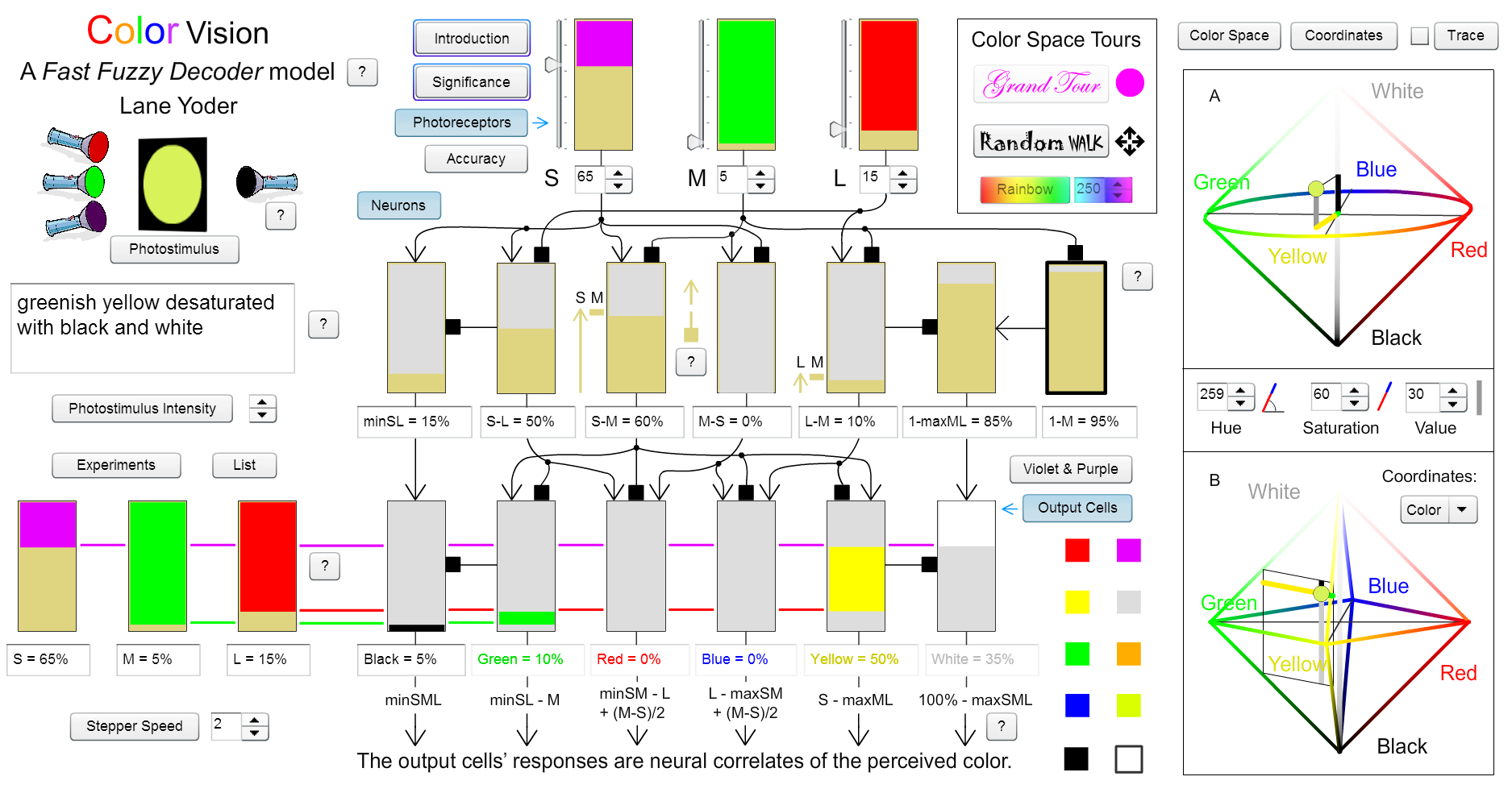DEEP Neural Networks
show how the brain is wired
|
ANNOUNCEMENTS
|
Fuzzy Logic Decoders,* Flip-Flops, & Cascaded Oscillators
Produce
Color Vision, Olfaction, Short-Term Memory, Brainwaves,
Lamprey Locomotion,
and the Chewing Action in Lobster Stomachs
*Demonstrated by a fun, Interactive & Animated Model of Color Vision. Recommended: Three short animated videos demonstrate the main points of FFDs.
DEEP neural networks almost certainly show how neurons are actually connected to process information. A simple fuzzy logic decoder generates the major phenomena of both olfaction and color vision (such as color mixing and the shape of color space), including the brain's shortcomings (such as the Bezold–Brücke hue shift) [1, 2 in Related Articles]. Simple flip-flops and cascaded oscillators generate the major phenomena of short-term memory [4] and electroencephalography (such as the distribution of brainwave frequencies in bands) [5]. Read more.
Evidence suggests Fast Fuzzy Decoders TM (FFDs) carry out much of the information processing in the brain. FFDs represent the first neural model that is explicit, dynamic (meaning the only changes are the neurons' levels of activation), and predictive of familiar brain phenomena. No other explicit model has been proposed that generates a neural correlate of even one of these phenomena. The published articles show for the first time that a neuron can function as a logic gate, that the gate is functionally complete (meaning any set of logic statements can be implemented with the gates), and that neuron inhibition can play a significant role in processing information. Read more. It has recently been shown that FFDs can be implemented with ordinary electronic components as well as with neurons. A paper on this subject is in preparation.
FFDs are a family of novel logic circuits. For binary input values (0 or 1), each possible combination of inputs (the encoded input) activates a different output channel with the value 1 (the decoded result). The rest of the outputs have value 0. “Decoder” is the engineering term for such networks. For intermediate input values between 0 and 1, FFD output values convey a powerful form of fuzzy logic. Finally, the FFDs' network architecture makes their operation extremely fast. Read more. For the most accessible background information, see the FFD Primer.
The fuzzy logic of FFDs is powerful for two reasons: The total truth value of 1 is distributed over the FFD outputs like probabilities, conveying the extent to which each of the possible combinations of inputs is true. And the combination of FFD outputs that are positive identifies the ordering of the input values. These properties enable the brain to perform highly complex tasks, like taking input signals from sensory receptors with overlapping sensitivities and identifying the individual components and their relative strengths in mixtures of colors or odorants. The properties are clearly demonstrated in the Interactive Model of Color Vision. Read more.
The architecture of FFDs has several significant advantages over conventional decoders besides speed and powerful fuzzy logic. FFDs have simple architecture and smaller material requirements even for digital computing. The networks are modular and recursively defined, allowing a simple construction process with a single type of simple component. Read more.
The Interactive Model of Color Vision is a specific example of an FFD. For a fun demonstration of how neurons process color, click on the image below. You won't see this explanation of color vision in any textbook - yet. And there is no other explicit neural explanation, in spite of intense efforts to find one. Icon note: The figure in the upper left corner of the website shows the symmetry of the model in three dimensions and how it could be packed efficiently in the retina. It appears as Figure 4 in [2] on the Related Articles page.
Please send a comment or question by clicking on Contact Us at the top. Messages of general interest will be added to the Blog page if the author doesn't express any objection. The FFD model for processing information in the brain is new and apparently considered radical, so challenges are especially welcome.
